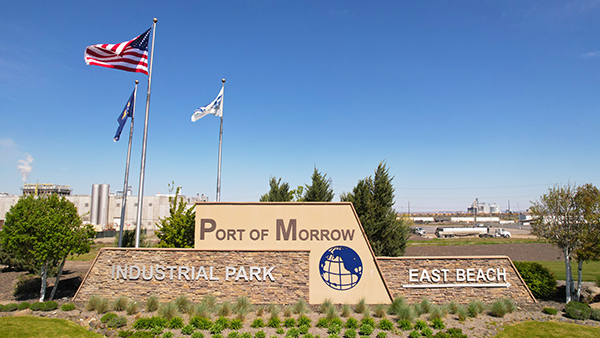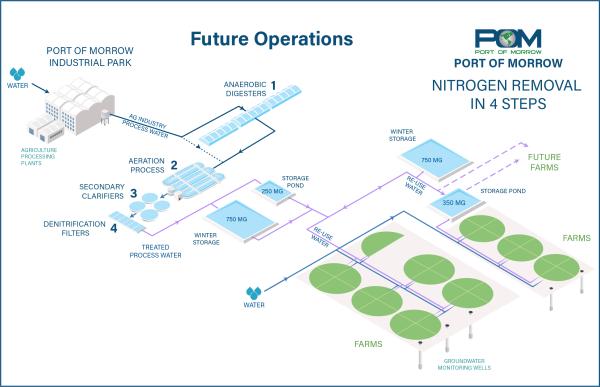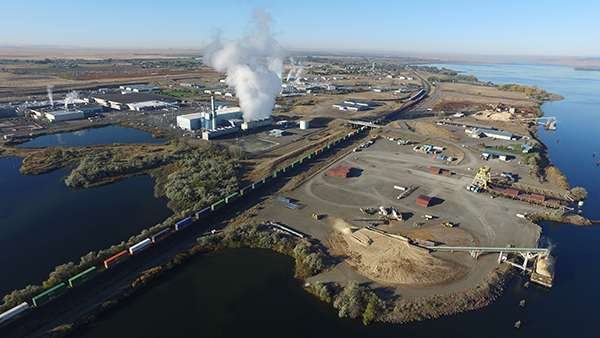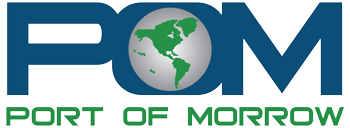Download POM 10 Facts in PDF Format.

2. The Port annually cools and processes 3 billion gallons of industrial wastewater for reuse as irrigation on five local farms, reducing their need for chemical fertilizers and other sources of irrigation water.
3. The Port of Morrow is one of the largest owners of vacant industrial land in Oregon, with more than 5,000 acres of undeveloped land zoned for industrial use. Its four major locations are Airport Industrial Park, Boardman Industrial Park, East Beach Industrial Park and South Morrow Industrial Park.
4. The Port has diversified the local and regional economy by accommodating solar energy production and advanced data centers to go along with food processing, transportation, warehousing, freight distribution, waste management and recreation. Companies doing business with the Port employ half of the region’s workforce.
 5. The Port is investing more than $400 million to treat industrial wastewater by removing nitrates from water reused for irrigation. The project includes major expansion and modernization of the Port’s water storage lagoons to avoid future land application of reused water during the winter starting in the fall of 2025, a full year ahead of what’s required in the Port’s DEQ permit.
5. The Port is investing more than $400 million to treat industrial wastewater by removing nitrates from water reused for irrigation. The project includes major expansion and modernization of the Port’s water storage lagoons to avoid future land application of reused water during the winter starting in the fall of 2025, a full year ahead of what’s required in the Port’s DEQ permit.
6. The Port was established in 1959 as a municipal district under state law and began acquiring industrial and harbor land in the early 1960s. Its first tenants signed up in the late 1960s. Construction of a new I-84 Port interchange in the 1980s relieved freeway congestion and provided easy access to Boardman Industrial Park.
7. The Port’s location along the Columbia River makes it the gateway for the region. The Union Pacific Railroad mainline passes through a rail loop at the East Beach Industrial Park. Incoming barges handling container shipments transfer to trucks at the Port. Terminal 3 operated by Tidewater is the largest container terminal upriver from Portland, handling approximately 11,000 containers annually. Barges traveling on the Columbia River from the Port can access oceangoing ports in Portland, Tacoma and Seattle in 12 hours or less.
8. Boardman Industrial Park is home to the Blue Mountain Community College Workforce Training Center, Neal Early Childhood Education Center and Boardman Pool and Recreation Center, all opened in 2017. The Sustainable Agriculture and Energy Center (SAGE), which opened in 2013, provides meeting, conference, communication and education/training facilities for local businesses and residents. The Port recently completed a 15,000 square foot event center expansion.

10. The Port’s industrial wastewater reuse system has been a significant factor in attracting food processing, data centers and other manufacturers to Northeast Oregon. Despite all press coverage, processing reused water generates only 21% of the Port’s total annual revenue while accounting for 77% of its capital investments in 2024-2025.
